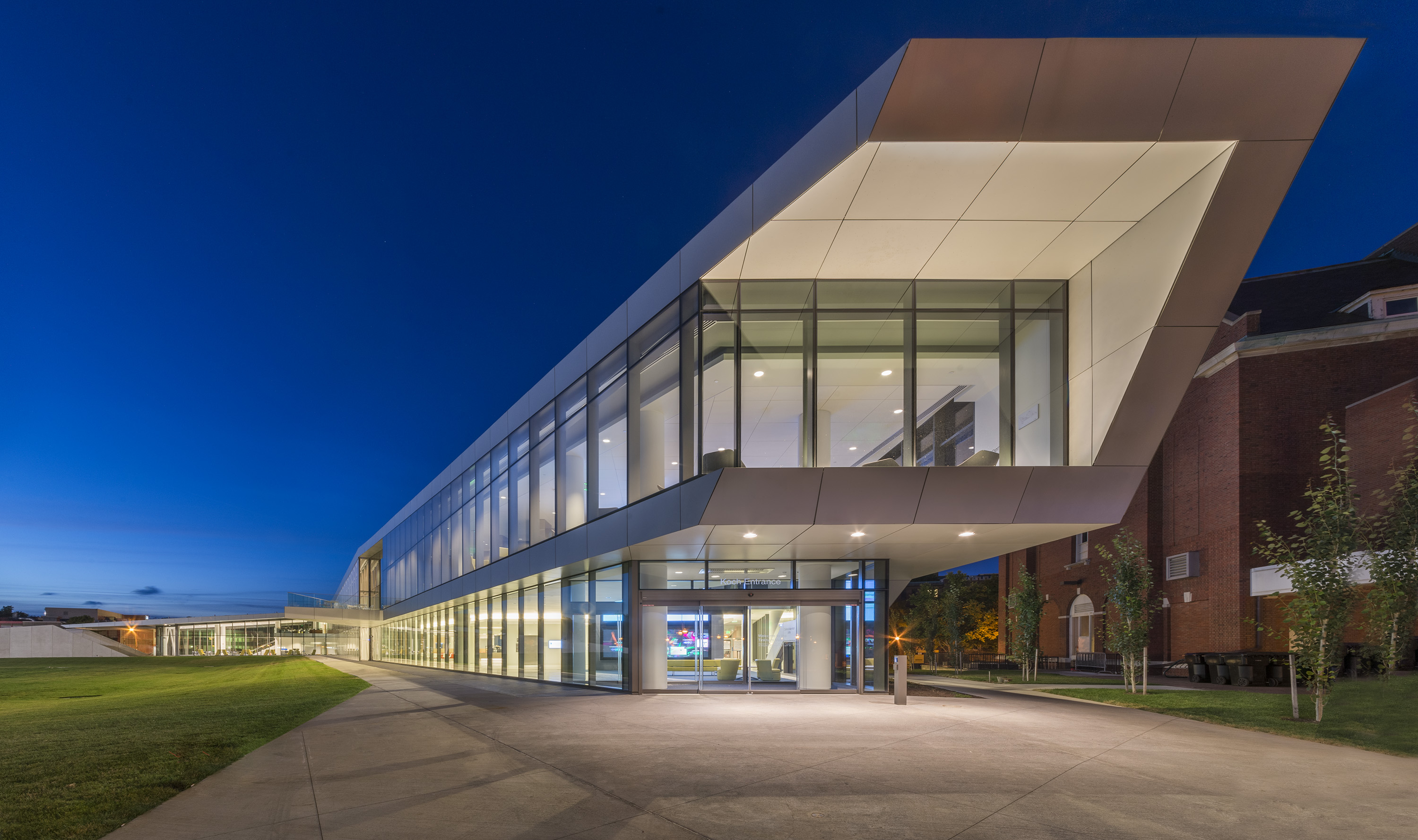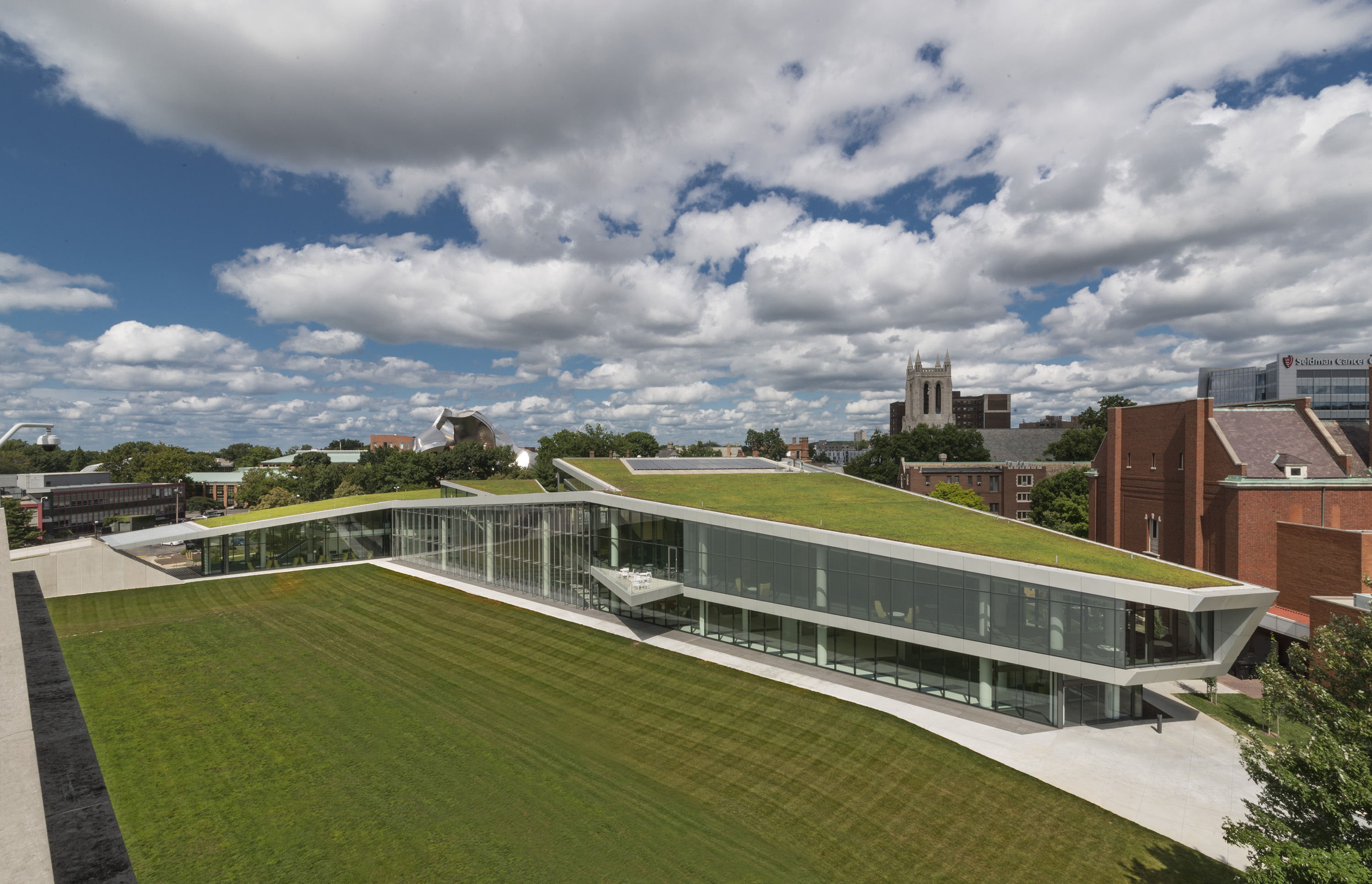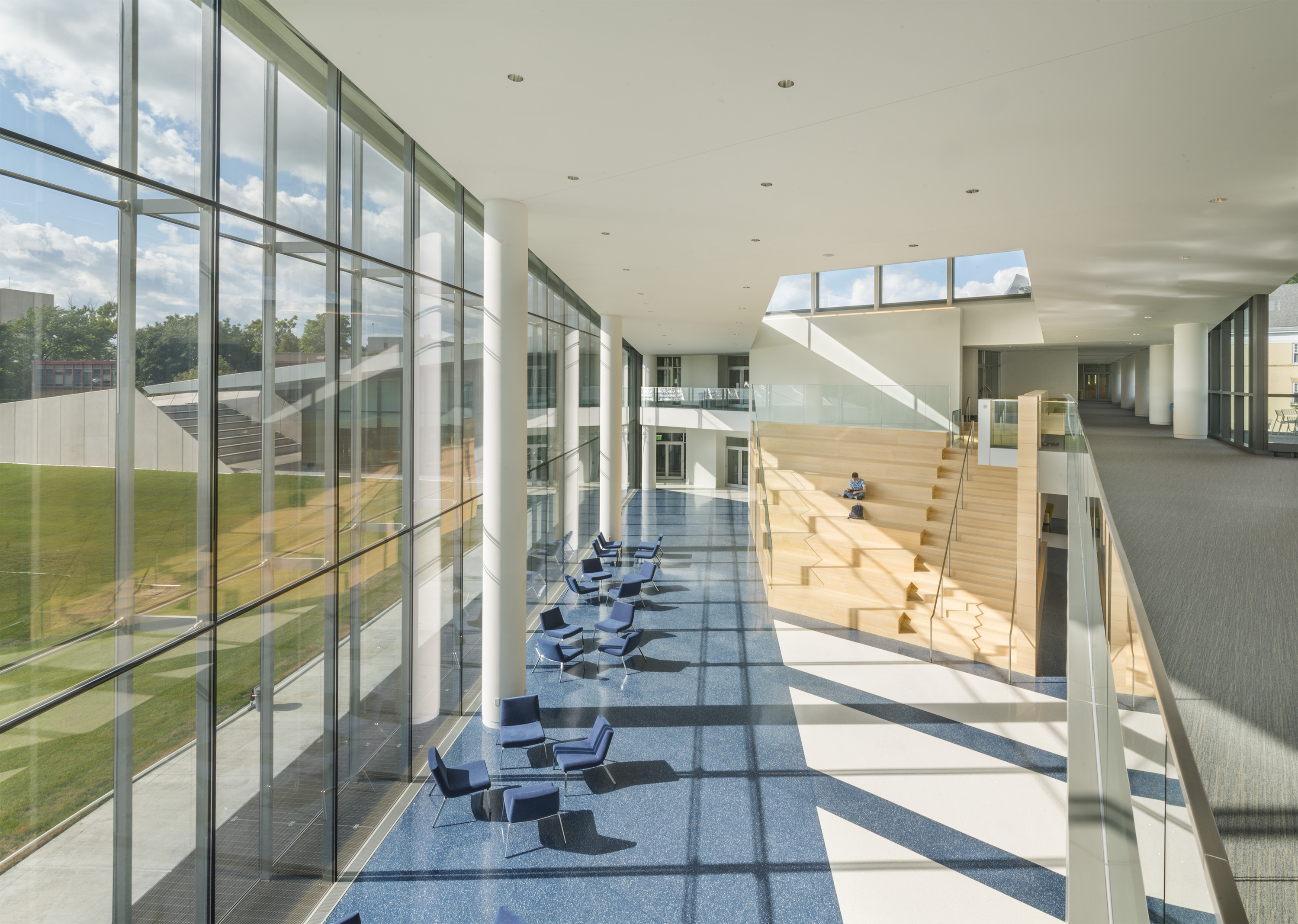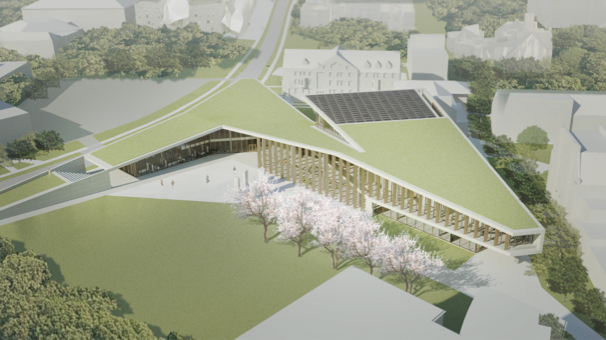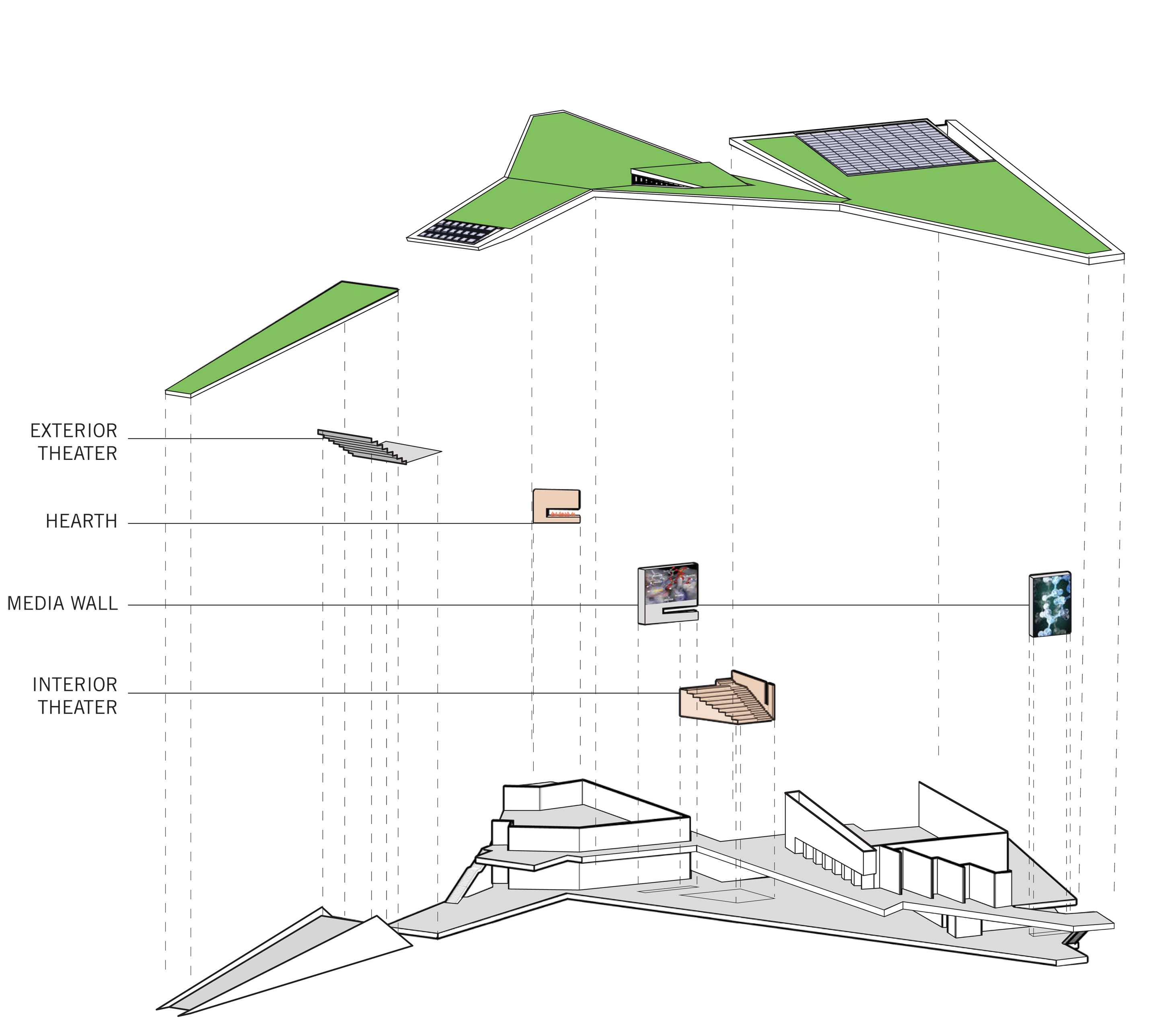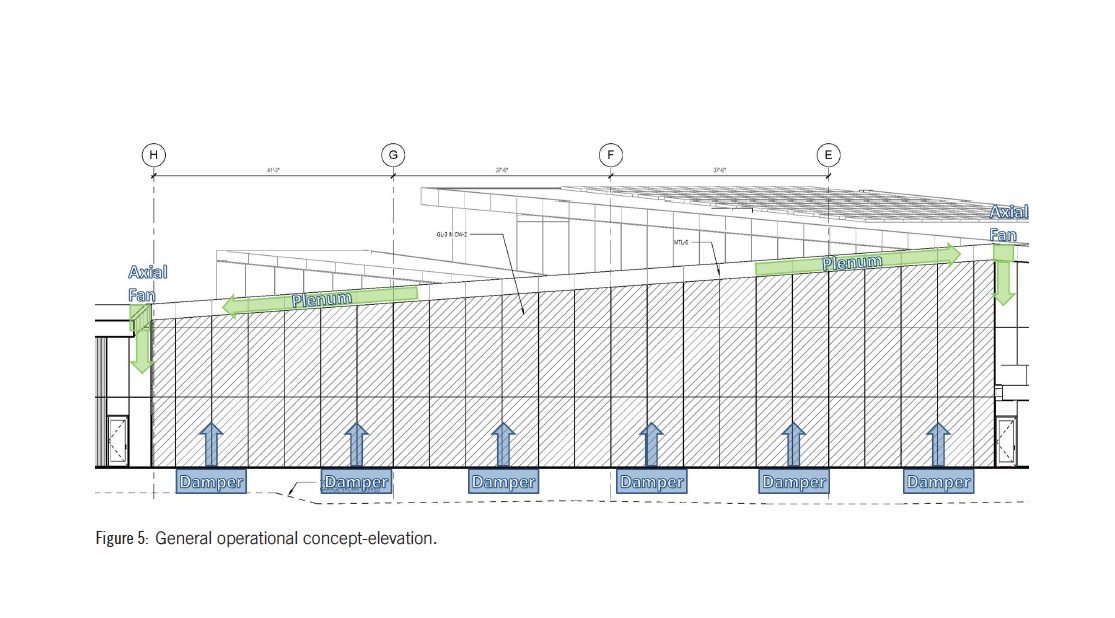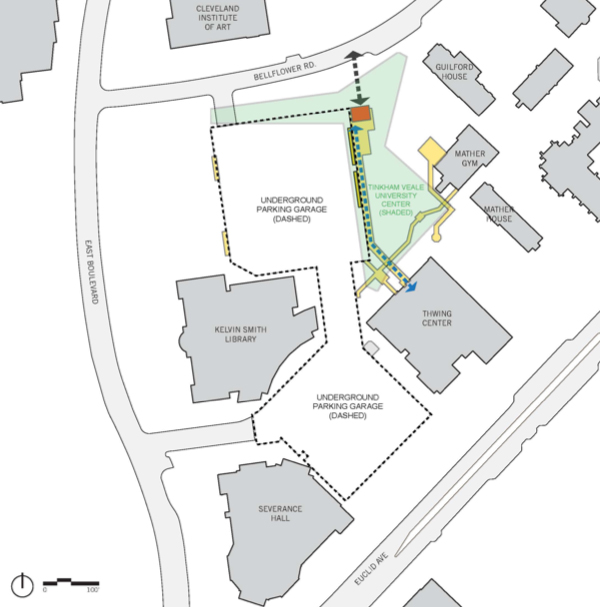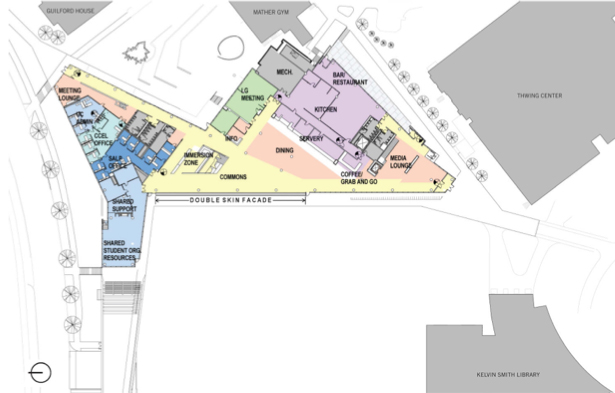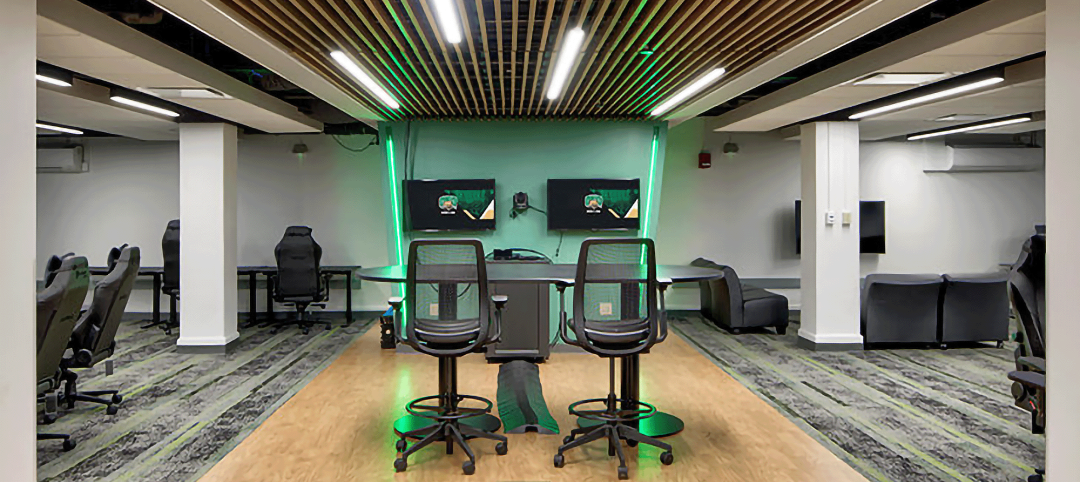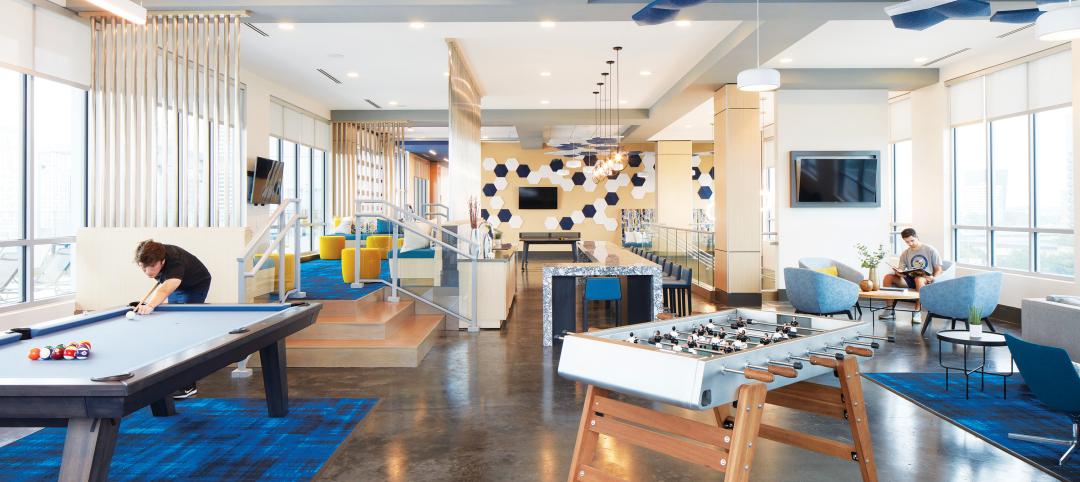The opening of the new two-story Tinkham Veale University Center, designed by global architecture and design firm Perkins+Will, brings together the two historic campuses of Cleveland’s Case Western Reserve University in a sustainably-designed university center.
The 89,000 sf building combines public spaces, quiet study areas, student organization offices, and a variety of spaces for community functions—all to foster greater interaction and collaboration among students, faculty, staff and community.
With its sloping grass-covered green roof, the two-story building is at the intersection of the two historic original Western Reserve University and Case Institute of Technology campuses, and includes a pass-through walkway that extends through the building connecting the campuses.
The Perkins+Will project team, led by its Chicago and Atlanta offices, designed a center with defined social/cultural, meeting/event, and food/beverage areas with intersecting, public spaces to encourage socializing, collaborating, studying and relaxing.
The campus is within Cleveland’s University Circle district, which includes various cultural institutions such as the Cleveland Museum of Art and Severance Hall, home of the Cleveland Orchestra. The siting of the building imposed a variety of constraints, required particular design sensitivities, and sparked a number of innovations. It is next to an underground parking garage, which would not support the weight of a large building. The space also is surrounded by four other campus buildings, the Arts Courtyard, a playing field and a public street.
The shape of the building addresses these constraints by stretching horizontally in three directions. The center frames Freiberger Field, a popular student gathering place, which sits atop the parking garage, and provides greater definition to two other outdoor spaces, the Arts Courtyard and the Mather Courtyard.
“We turned a challenging space into an asset,” said Ralph Johnson, Perkins+Will Global Design Director and Design Principal on the project. “We celebrated and defined these open spaces."
The university was also keenly interested in a building featuring openness, transparency and interactivity. A key decision to create greater interaction led to placing an outdoor walkway that connected the North Campus and the Case Quad into the new center.
"The building brings together various areas of the campus into a central social space for students," added Johnson. "The design respects the context and the constraints of the site it is on and, with the pass-through walkway, provides a major circulation path that energizes the interior of the building."
"In fact," said Stephen Campbell, the university’s Vice President for Campus Planning and Facilities Management, "we sought input from students in the planning and design. We expect them to make the center their own."
The building, open 24 hours a day, seven days a week, is designed to provide for informal and formal gatherings for undergraduates, graduates, faculty, staff, and the community. It is unlike any building that currently exists on campus.
"We were able to create a highly transparent building with public and private spaces that promote interaction among students, faculty and staff throughout their daily campus experience," said Mark Jolicoeur, Perkins+Will Managing Principal on the center.
Another key design feature to the center is a two-story, west-facing double-glass wall that required an innovative engineering system to address solar heat-gain generated by late afternoon sunlight. To reduce energy use and better control the interior environment, the team used fans that pull air to cool the space between the glass walls at high temperatures, while rooftop sensors trigger roller shades to be lowered when the sun is creating glare in the Commons.
During cold winter months, the glass walls allow warmer air to build up. With the glass wall situated above a section of the parking garage containing an air shaft, the design team also had to calculate how to maintain proper air circulation into, and out of, the garage.
The new center is a model of environmental stewardship through its design, construction, and operation. The building is designed to meet or exceed LEED Silver standards.
Perkins+Will brought an interdisciplinary approach to the project, involving Architecture, Interiors, Branded Environments, and Higher Education expertise.
Perkins+Will is a leading designer of higher education buildings, and expects to complete eight student center projects in 2014.
"Case Western Reserve is probably the most progressive expression of the modern student center," said B. Jeffrey Stebar, Planning Principal and a national expert on designing campus centers. "More and more student learning will take place in environments like this center—spaces where students and faculty and the campus community can meet and explore outside traditional and formal learning spaces."
Local architecture support in Cleveland was provided by CBLH Design. Renderings courtesy of Perkins+Will, Case Western Reserve University.
Level 1 plan
Related Stories
ProConnect Events | Jan 16, 2023
6 more BD+C ProConnect Events in 2023 – The videos show why you should participate
ProConnects bring building product manufacturers and suppliers together with architects, contractors, builders, and developers to discuss upcoming projects and learn about new products and technical solutions.
Adaptive Reuse | Jan 12, 2023
Invest in existing buildings for your university
According to Nick Sillies of GBBN, students are increasingly asking: "How sustainable is your institution?" Reusing existing buildings may help answer that.
University Buildings | Dec 22, 2022
Loyola Marymount University completes a new home for its acclaimed School of Film and Television
California’s Loyola Marymount University (LMU) has completed two new buildings for arts and media education at its Westchester campus. Designed by Skidmore, Owings & Merrill (SOM), the Howard B. Fitzpatrick Pavilion is the new home of the undergraduate School of Film and Television, which is consistently ranked among the nation’s top 10 film schools. Also designed by SOM, the open-air Drollinger Family Stage is an outdoor lecture and performance space.
Adaptive Reuse | Dec 21, 2022
University of Pittsburgh reinvents century-old Model-T building as a life sciences research facility
After opening earlier this year, The Assembly recently achieved LEED Gold certification, aligning with the school’s and community’s larger sustainability efforts.
Esports Arenas | Dec 19, 2022
Ohio University’s OHIO Esports Arena redefines video gaming
If a college student enjoys film studies, there is probably a place on campus where they can join other film buffs. But where can students who like video games go?
Sponsored | Resiliency | Dec 14, 2022
Flood protection: What building owners need to know to protect their properties
This course from Walter P Moore examines numerous flood protection approaches and building owner needs before delving into the flood protection process. Determining the flood resilience of a property can provide a good understanding of risk associated costs.
Student Housing | Dec 7, 2022
9 exemplary student housing projects in 2022
Production continued apace this year and last, as colleges and universities, for-profit developers, and their AEC teams scrambled to get college residences open before the start of classes.
University Buildings | Dec 5, 2022
Florida Polytechnic University unveils its Applied Research Center, furthering its mission to provide STEM education
In Lakeland, Fla., located between Orlando and Tampa, Florida Polytechnic University unveiled its new Applied Research Center (ARC). Designed by HOK and built by Skanska, the 90,000-sf academic building houses research and teaching laboratories, student design spaces, conference rooms, and faculty offices—furthering the school’s science, technology, engineering, and mathematics (STEM) mission.
Education Facilities | Nov 30, 2022
10 ways to achieve therapeutic learning environments
Today’s school should be much more than a place to learn—it should be a nurturing setting that celebrates achievements and responds to the challenges of many different users.
Data Centers | Nov 28, 2022
Data centers are a hot market—don't waste the heat!
SmithGroup's Brian Rener shares a few ways to integrate data centers in mixed-use sites, utilizing waste heat to optimize the energy demands of the buildings.


